Science!
Gun: Ruger GP-100 (6" barrel)
Ammo: 158gr Hornady XTP (Handload)
Muzzle Velocity: 1,282 fps
Distance of Shot: 27 yards
Angle: Quartering TowardsP
POI: Point of On-Side Shoulder / Broke Shoulder Scapula
Impact Velocity: 1,225 fps (est.)
Distance Traveled: Approximately 90 yards (Paced Off)
Entrance:
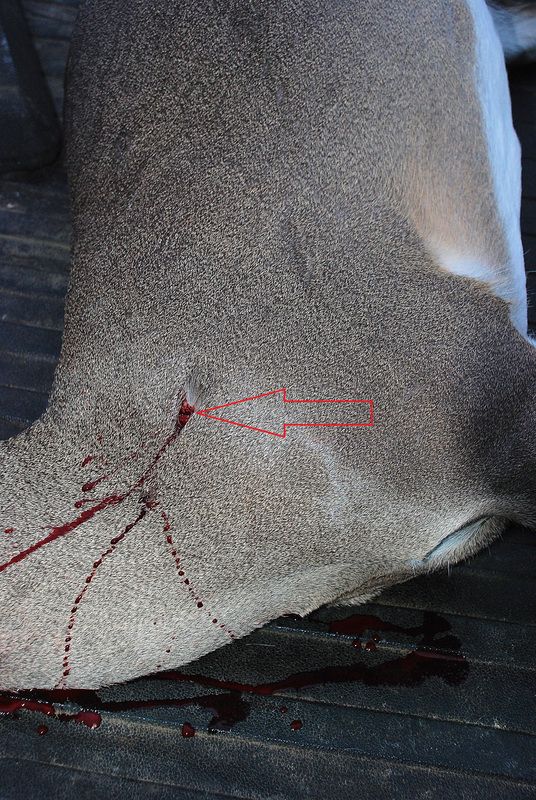
Under Hide:

Under Shoulder:
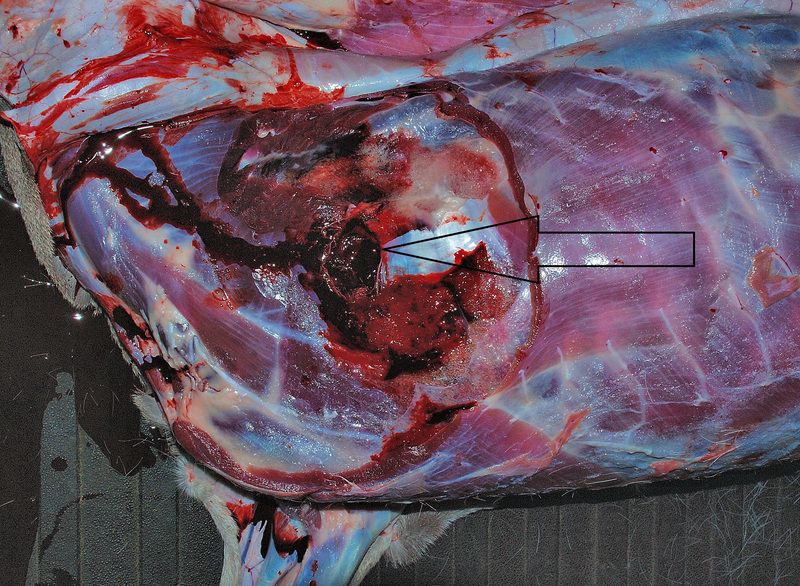
Through Shoulder:
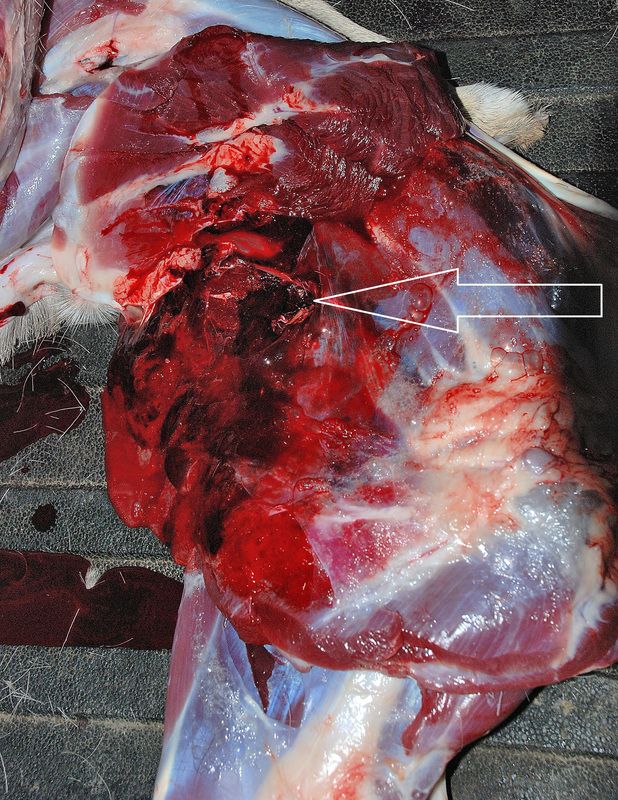
The bullet shattered the scapula about 1/3 of the way up from the joint and through the thickest point of the bone.
Through the Ribs:
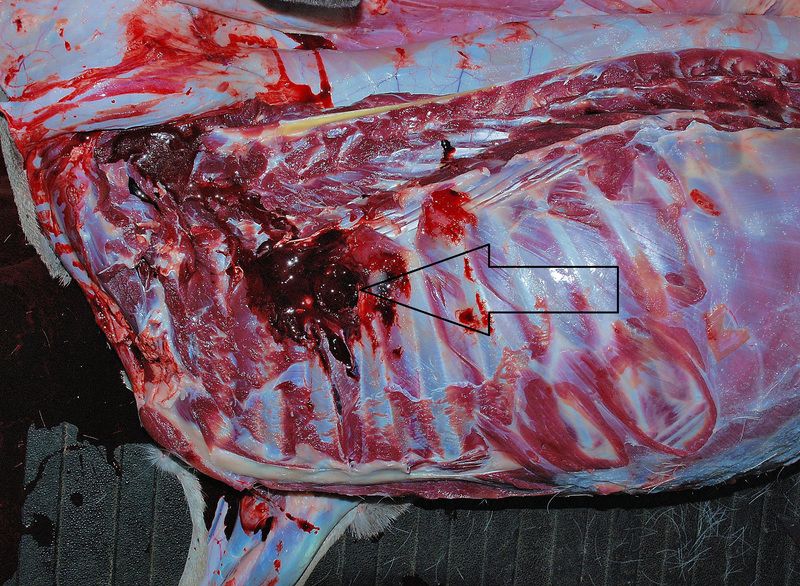
The bullet cracked a rib on entrance.
Entrance to left lung and thoracic cavity:
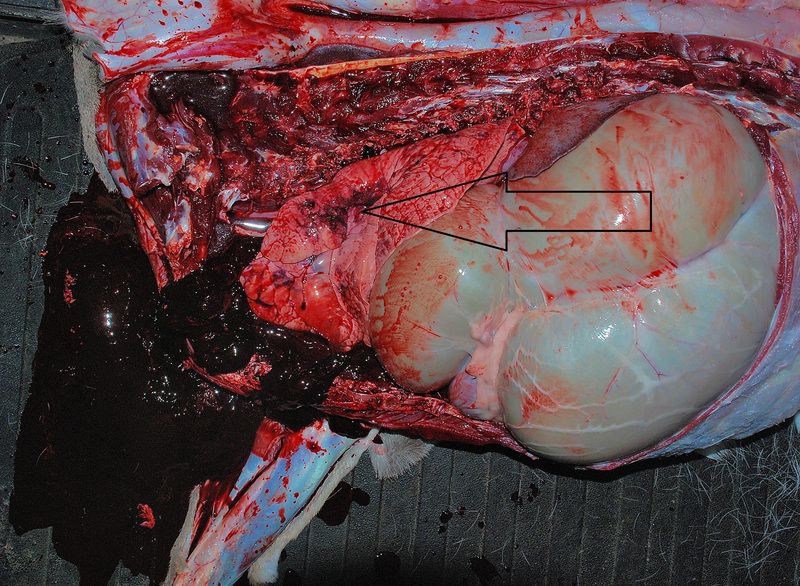

There was substantial internal bleeding and coagulated blood in the chest cavity. Little internal bleeding until she reached the brush as the entrance was so high due to my downward angle and the lack of an exit wound. Once she reached the brush, there was a fair amount of blood on the ground until she fell.
Entrance to front of Left Lung:

The bullet entered the left lung and passed through the aortic arch and trachea. passing between the two rear lobes of the lungs and catching the rear most portion of the right lung.
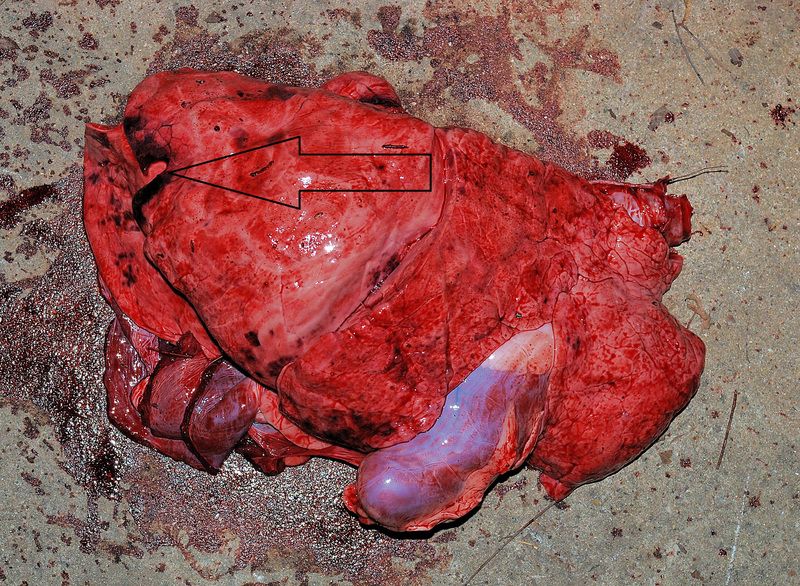
Exit Through Ribs:

The bullet passed through the edge of the diaphragm but missed the liver and stomach. Breaking 1 rib on exit, the bullet lodged under the skin on the off side.

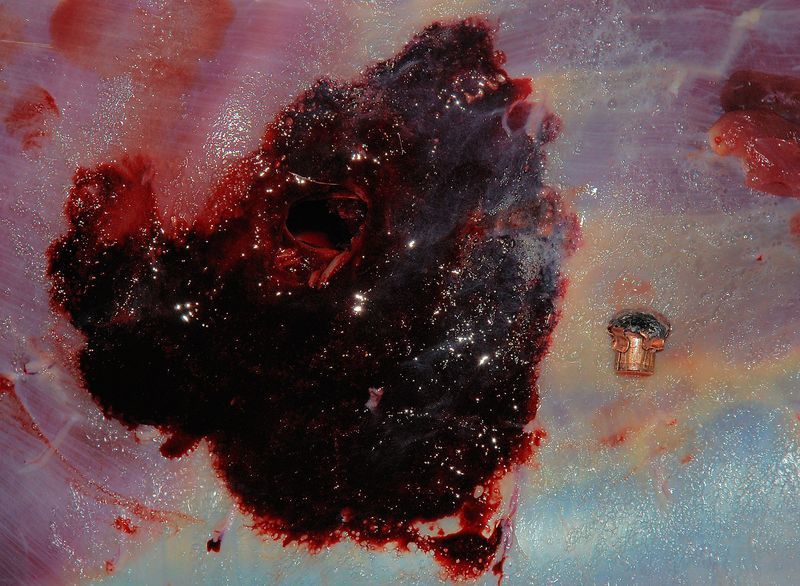
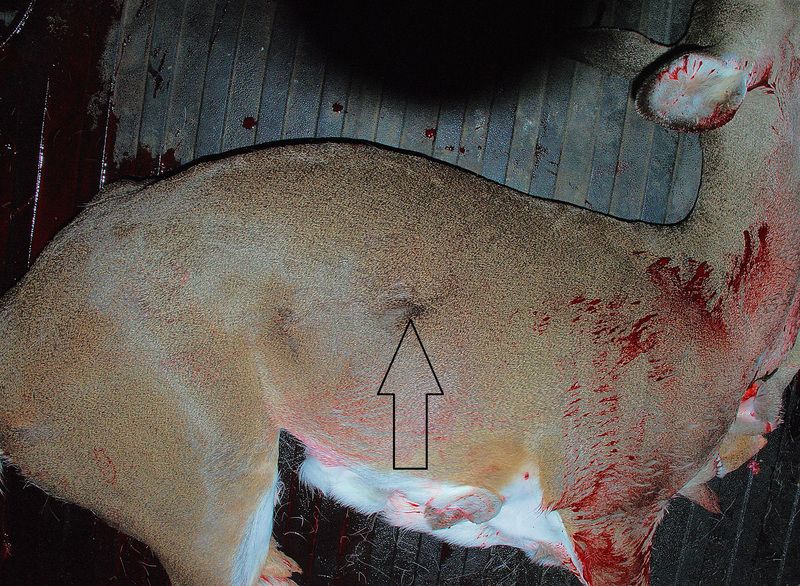
Bullet retained 145 grains of it's original 158 grain weight.
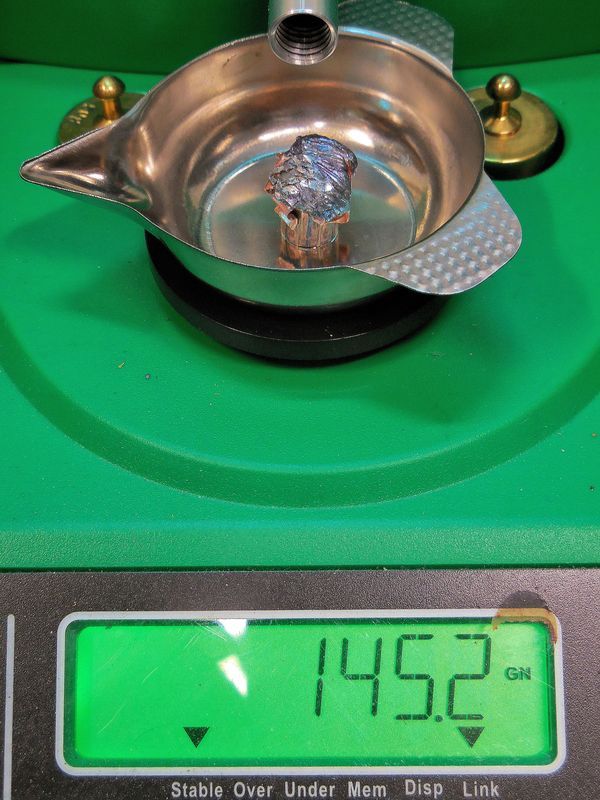
The bullet still expanded, even after initial contact with heavy bone. I do believe it was lessened though, because of this contact.
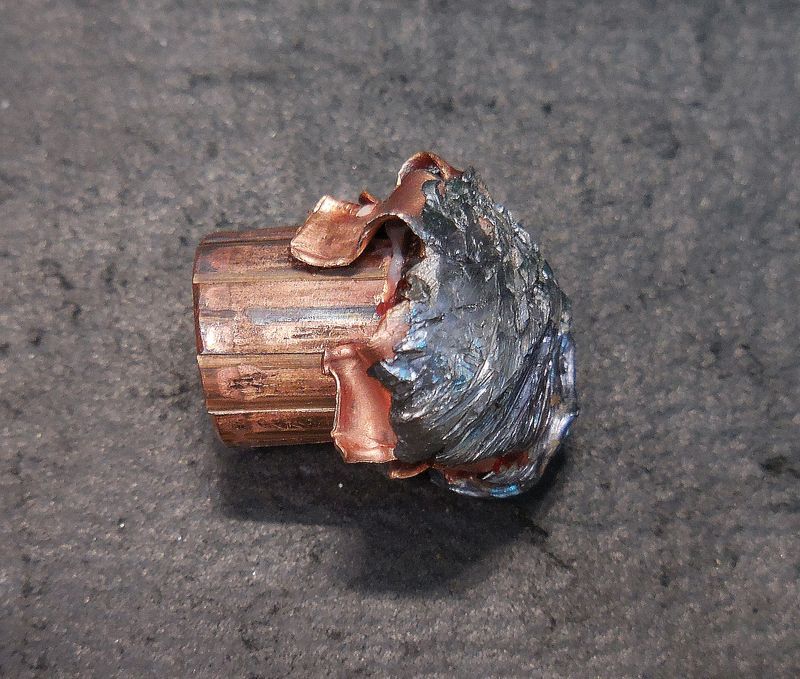
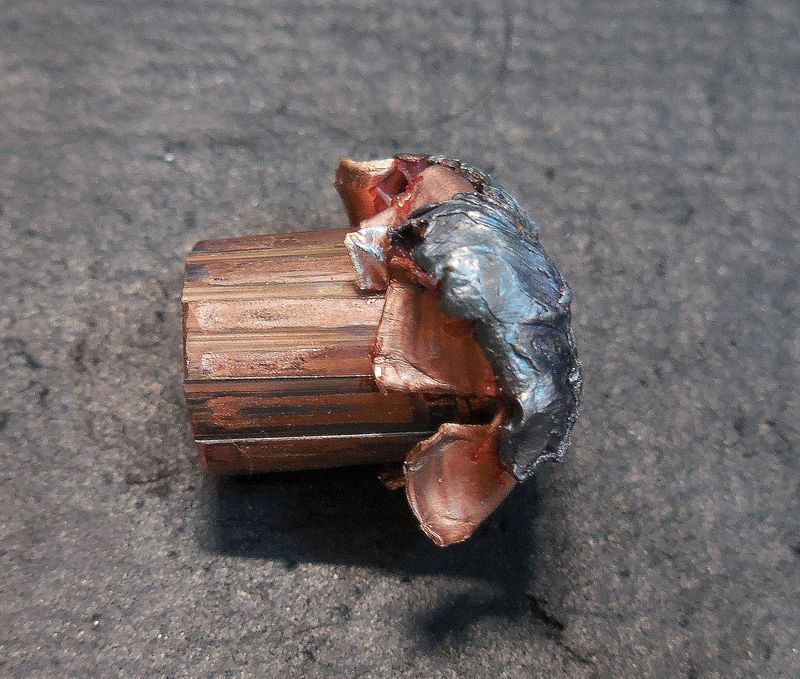
Weight retention was exceptional considering what it struck and penetration was better than I anticipated. I had held off shooting that first doe at 30 yards because she was quartering towards me. Hoping for a broadside shot and missed my chance because of my concern for penetration. When offered the same angle on this doe and fearing the loss of another opportunity, I took the shot anyway. In retrospect, after seeing the results........I had no cause for concern on the first doe.
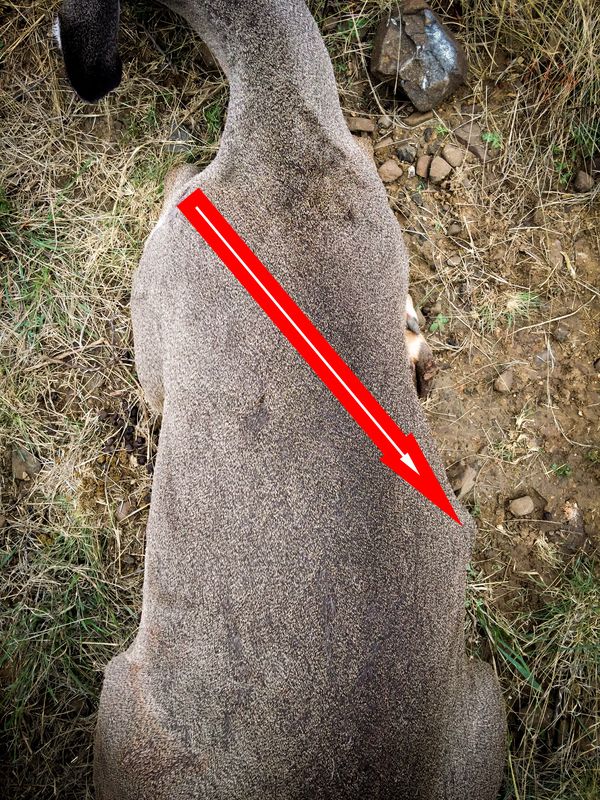
I am pretty impressed with the results. That the bullet held together, expanded considering the bone, and penetrated well. There was not much evidence of hydrostatic shock and temporary cavity trauma. But, that is to be expected and consistent with what I have been seeing with lower velocity handgun cartridges. They poke through tissue, destroying what the contact, with little secondary damage to surrounding tissue.
You cannot rely on hydrostatic shock to help you out with handgun cartridges at handgun velocities unless you are point blank. Your shots need to be well placed to get the desired result. Shoddy marksmanship, while the same for high velocity cartridges, is even more critical in handgun velocities.
These are my findings.